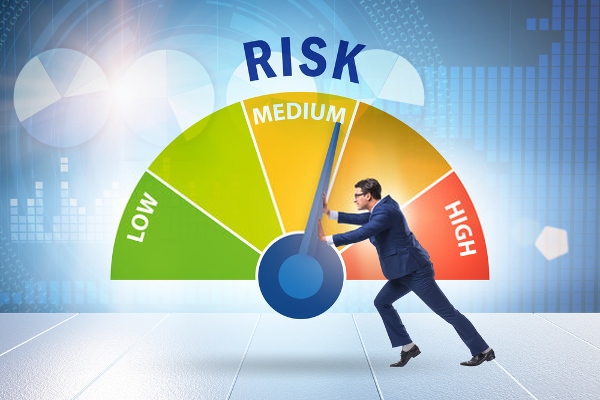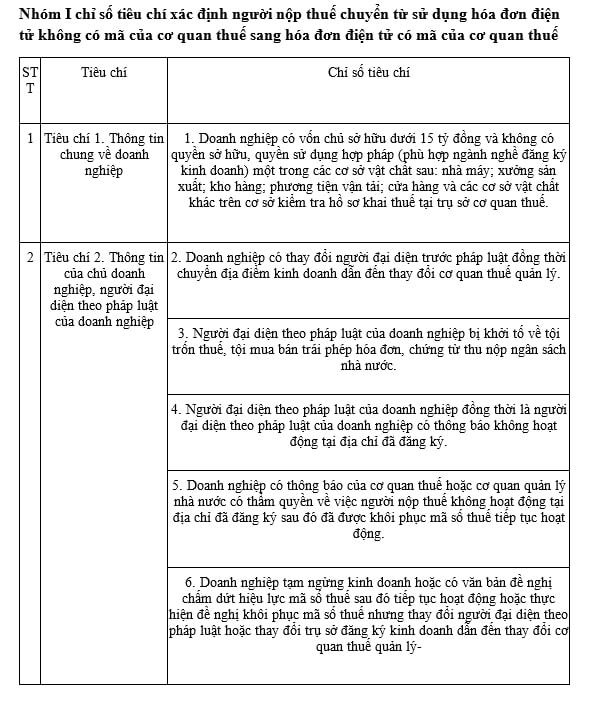Together Bizzi Find out the list of 116 risky businesses established by an individual and the signs of risky businesses according to the General Department of Taxation!
List of 116 risky businesses established by 1 individual?
According to Official Dispatch 943/CCTQ6-KT2 regarding warning a person acting as legal representative of 116 companies.
Accordingly, the tax authority reviewed the business registration information of the company's legal representative, looked up taxpayer data on the centralized tax management application (TMS) in the taxpayer directory function, and discovered that an individual acting as the legal representative registered to establish 116 companies.
As prescribed in Enterprise Law 2020 The law does not limit the number of individuals establishing a business, but only limits private enterprises in Article 188. Enterprise Law 2020
However, according to Official dispatch 1873/TCT-TTKT year 2022 According to the General Department of Taxation, the act of an individual (legal representative) establishing and operating many businesses is one of 25 signs that a business has risks regarding invoices and taxes.
See detailed list of 116 companies established by 1 individual here

What are the 25 signs of businesses at risk regarding invoices and taxes according to Official Dispatch 1873/TCT-TTKT of the General Department of Taxation?
The General Department of Taxation has issued 25 signs of businesses with risks regarding invoices and value-added tax (VAT) refunds. Official dispatch 1873/TCT-TTKT year 2022 as follows:
| STT | Signs of a risky business |
| first | Enterprises change their legal representatives 2 or more times within 12 months or change their legal representatives while changing their business locations. |
| 2 | Enterprises have changed their operating status/business activities 02 times a year. |
| 3 | Newly established businesses change business locations many times within 1-2 years of operation. |
| 4 | The enterprise changes its business location after receiving a Notice of inactivity at the registered address. |
| 5 | Enterprises established by individuals with family relationships contributing capital such as husband, wife, siblings, etc. |
| 6 | A newly established enterprise whose director or legal representative has a company whose business address has been notified by the tax authority (tax arrears) to be abandoned and business operations temporarily suspended for a period of time. |
| 7 | A business established for many years without generating revenue, then sold or transferred to another person. |
| 8 | Enterprises established without a license to exploit minerals but issue invoices for resources and minerals. |
| 9 | Enterprises have goods sold and purchased that are not suitable to the conditions and characteristics of each region. |
| 10 | The enterprise has not paid enough charter capital as registered. |
| 11 | Enterprises buying and selling, merging with value under 100 million VND. |
| 12 | Businesses that have a large labor leasing business: – Supermarket business (retail of consumer goods, electronics); – Food and beverage business, restaurants, hotels; – Transportation business; construction materials business; – Petroleum business; – Business in the field of mining soil, stone, sand, gravel; mineral business (coal, kaolin, iron ore …); – Trading in agricultural and forestry products (wood chips, wood panels, wood bars, etc.). |
| 13 | Revenue spike: The previous declared period had very low revenue, approximately zero, but the following period had a sudden increase in revenue or the following period's revenue had a sudden increase (from 3 times or more compared to the average revenue of previous periods). The amount of value added tax (VAT) payable is low (VAT payable < 1 % of revenue generated in the period). |
| 14 | Large revenue but inadequate or no warehouse, no warehouse rental costs incurred. |
| 15 | Annual declared revenue is over 10 billion VND but the tax payable is less than 100 million VND (1 %). |
| 16 | Enterprises use invoices in large quantities (from 500 - 2000 invoices). The number of deleted invoices is large, on average accounting for about 20% of the number of invoices used. |
| 17 | Enterprises use electronic invoices according to Decree 123/2020/ND-CP, Circular 78/2021/TT-BTC The number of electronic invoices has decreased abnormally compared to the number of invoices used according to Decree 51/2010/ND-CP. |
| 18 | Enterprises do not have an invoice issuance notice or have an issuance notice but do not have a report on invoice usage (or late reporting). |
| 19 | Enterprises have the value of goods sold and output VAT equal to or very slightly different from the value of goods purchased and input VAT. |
| 20 | The business has goods and services sold that do not match the goods and services purchased. |
| 21 | Enterprises with large revenue and output and input VAT but no tax payable, with negative VAT for many periods. |
| 22 | The business has no fixed assets or very low fixed asset value. |
| 23 | The business has suspicious transactions through the bank (money coming in and out on the same day). |
| 24 | Enterprises using labor disproportionate to their scale and industry of operation |
| 25 | An individual (legal representative) establishes and operates many businesses. |
What are the signs of a risky, violating business?
Pursuant to Decision 78/QD-TCT in 2023, the General Department of Taxation issued a set of criteria and indicators to assess and identify taxpayers with signs of risk in invoice management and use.
– Enterprises with high tax risks are enterprises that show signs of risks in invoice management and use based on the following assessment criteria:






